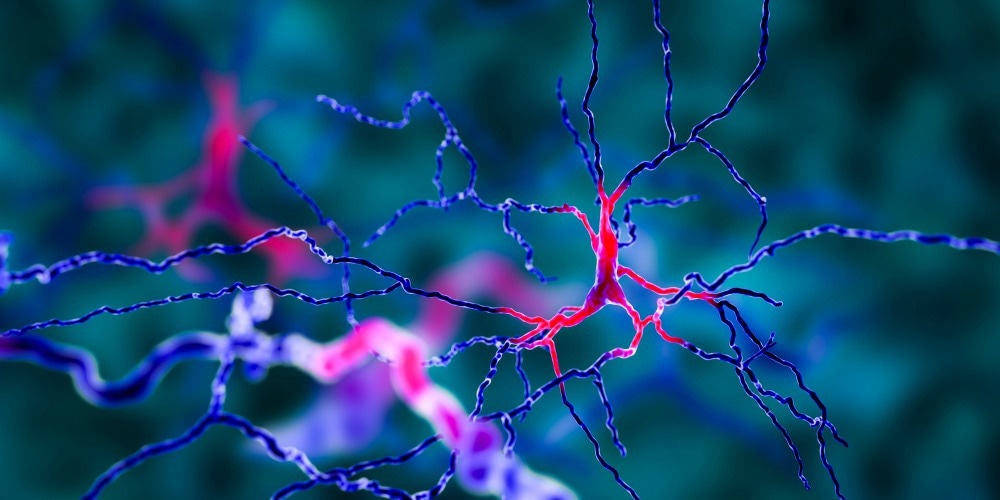 By Neha MathurReviewed by Danielle Ellis, B.Sc.Feb 21 2023
By Neha MathurReviewed by Danielle Ellis, B.Sc.Feb 21 2023In a recent preview published in Cell, researchers highlight recent research investigating whether gut microbiota regulates tau pathology and tau-mediated neurodegeneration in an ApoE isoform–dependent manner.
 Study: Extending genetic risk for Alzheimer’s disease from host to holobiont. Image Credit: Kateryna Kon/Shutterstock
Study: Extending genetic risk for Alzheimer’s disease from host to holobiont. Image Credit: Kateryna Kon/Shutterstock
Background
Since microbial metabolites play a crucial role in the human's gastrointestinal (GI), metabolic, neural, and immune functions, some scientists have begun to believe in redefining humans as one with the microbiomes residing inside them. They refer to this all-new entity as a "holobiont."
The majority of these microbial species reside inside the human gut. Studies are increasingly linking disturbances in the gut microbiome populations to a diversity of neurological and other diseases, including AD.
However, there is no consistency in the findings of studies concerning the perturbations in specific microbial taxa of AD patients. While one study found changes in microbial metabolites of the cerebrospinal fluid (CSF) in AD patients, other studies proposed microbial metabolite-based treatments for AD. Nevertheless, there appears to be a possibility of using host-microbial interactions to alleviate AD symptoms.
There are two other major hallmarks of AD apart from increased expression of the amyloid-beta (Aβ) genetic system, which so far has remained uncharacterized. First, it is yet unclear how the gut microbiome impacts neurofibrillary tangles and tau pathology. In addition, it is unknown how the gut microbiome impacts the apolipoprotein E (APOE) gene to trigger the onset of AD.
About the study
In a recent pre-clinical study by Seo et al. published in Science, they developed a murine model of AD. First, they generated male and female TE3 and TE4 mice, high-risk variants exhibiting early-onset AD. These mice overexpressed P301S, a tau isoform of humans, albeit with a point mutation resulting in frontotemporal lobar degeneration and docking APOE3 or APOE4.
They reared some mice in a germ-free (GF) environment (with no microbiome), while others had a conventional mouse microbiome. This helped them explore how the microbiome impacted AD-related outcomes. They evaluated causal links between tauopathy, APOE, and the gut microbiome in mice. Note they used antibiotics to diminish the gut microbiota in both mice types from 16 to 22 days post-birth.
Results
The researchers made some intriguing observations concerning AD pathology. First, they noted that antibiotic treatment conferred protection against tau- and APOE-mediated neuropathology in male TE3 mice only, suggesting interactions with the microbiome were APOE isoform- and gender-dependent.
Second, they found that 40-week-old TE4 mice reared in a GF environment had diminished tau aggregation in their brain, decreased brain atrophy, and reactive microglia and astrocytes compared to TE4 mice raised with microbiomes. Single-nucleus ribonucleic acid (RNA) sequencing of test animals' hippocampal tissue(s) uncovered that their gut microbiota regulated the expression of genes controlling reactive gliosis, especially in male TE3 mice.
Furthermore, 16S ribosomal RNA (rRNA) sequencing of the microbes in the fecal matter of mice indicated that antibiotics decreased the abundance of two short-chain fatty acids (SCFA) metabolism-related bacterial genera, viz., Butyricicoccus and Ruminococcus.
The researchers administered SCFAs acetate, butyrate, and propionate in 10 to 31-week-old TE4 mice reared in a GF environment, which reversed the protection conferred by GF rearing on AD's neuropathological manifestations. Further, it confirmed that SCFAs-mediated microbial metabolites impacted APOE- and tau-mediated risk for AD features.
Note that other amyloid beta-based murine models of AD and murine models of other neurodegenerative disorders, such as Parkinson's disease (PD), have shown similar protective effects of microbiome deficits induced by GF rearing or antibiotic treatment.
Conclusions
Overall, the study demonstrated the adverse effects of SCFAs on AD neuropathology in genetically predisposed mice. They provided proof of the principle that the adaptations in the microbiota seen in AD murine models are subtle yet significant.
The mouse and human microbiota encompass bacteria that are engaged in SCFA synthesis. However, in humans, SCFAs are synthesized when bacteria ferment complex carbohydrates, suggesting the role of diet in the context of humans. These factors that differentially shape the mouse and human microbiota need careful consideration.
For a more in-depth clinical understanding of AD patient subtypes, Seo et al. suggested that characterizations of the microbiome based on gender, dietary intake, and APOE risk (both compositional and functional) are warranted since several genetic and environmental factors affect AD. It could also pave the way for better diagnostic and therapeutic tools for multiple neurological disorders, including AD and PD.
Source:
- Seo, D.O., O’Donnell, D., Jain, N., Ulrich, J.D., Herz, J., Li, Y., Lemieux, M., Cheng, J., Hu, H., Serrano, J.R., et al. (2023). ApoE isoform and microbiota-dependent progression of neurodegeneration in a mouse model of tauopathy. Science. doi: https://doi.org/10.1126/science.add1236 https://www.science.org/doi/abs/10.1126/science.add1236?af=R&utm_source=sfmc&utm_medium=email&utm_campaign=SCIeToc&utm_content=alert&et_rid=585217538&et_cid=4558293
Journal reference: